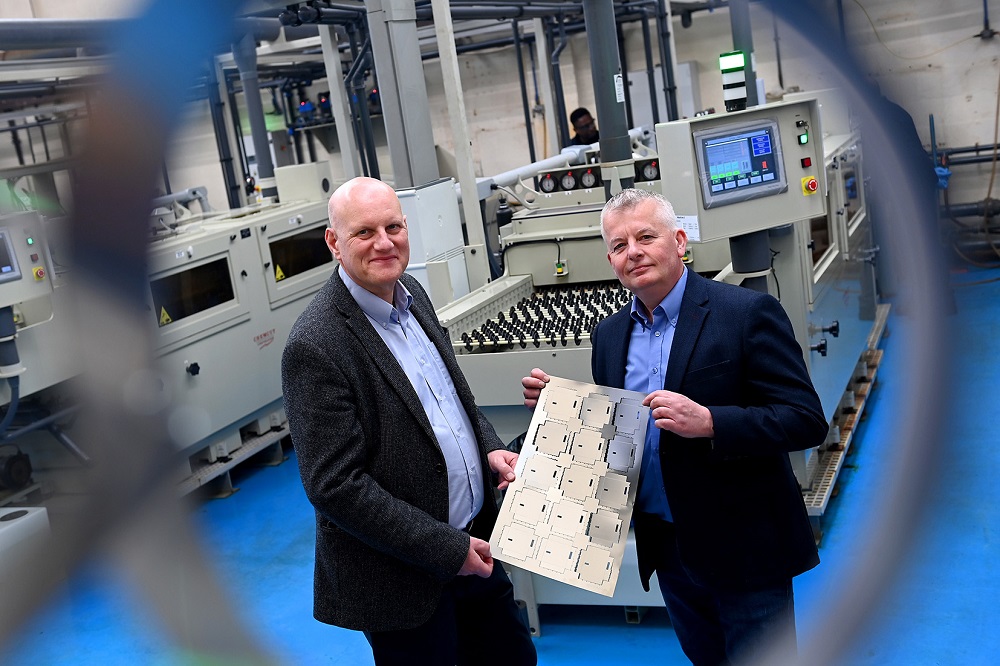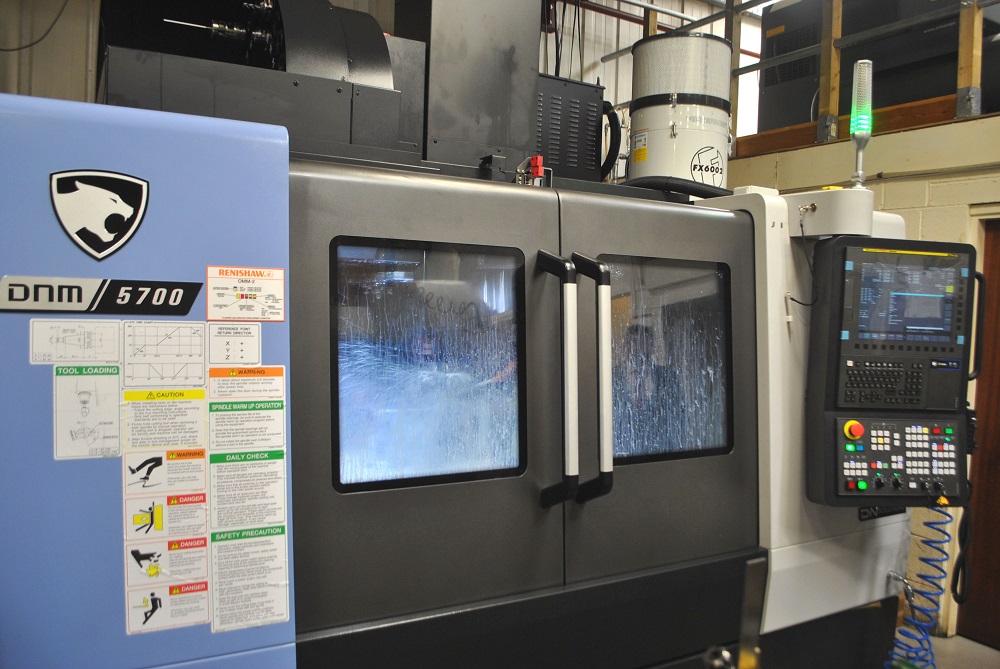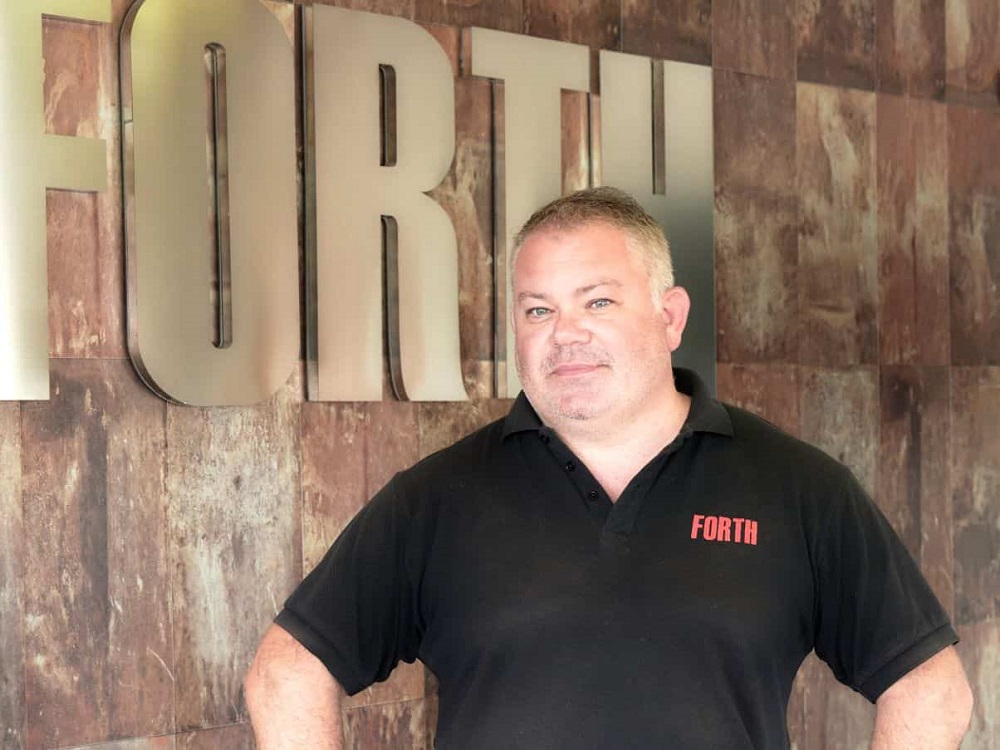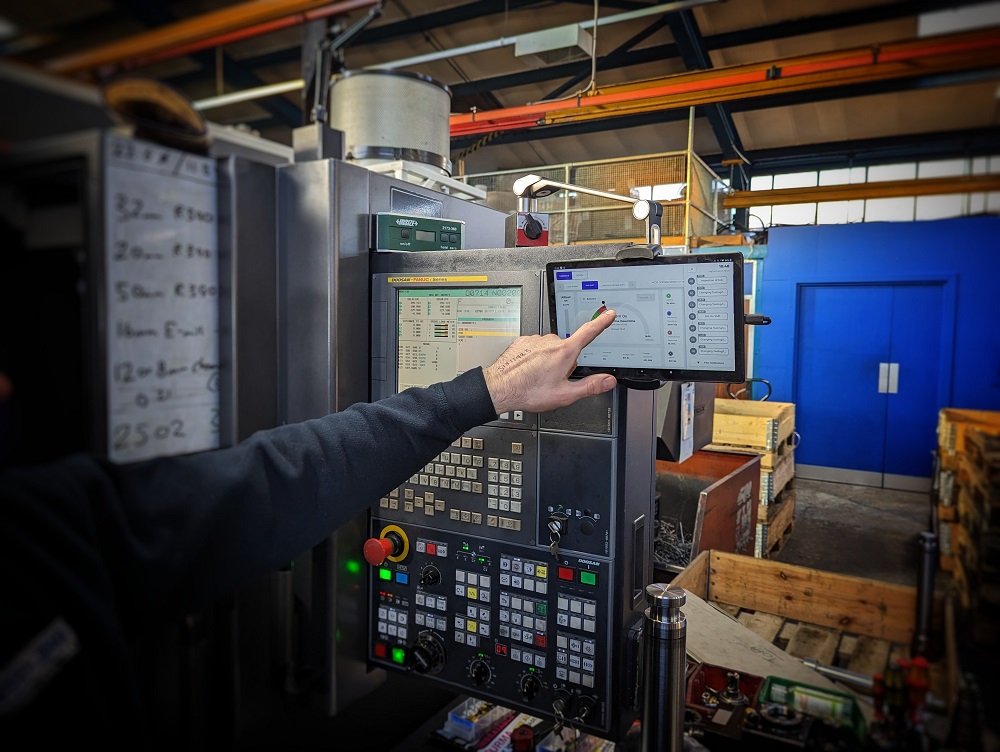Mills CNC has recently supplied Helmrick Engineers, a family-owned, precision subcontract specialist, based in Dewsbury, with a new three-axis vertical machining centre.The machine, a popular and best-selling DN Solutions’ DNM 5700 machining centre equipped with the latest FANUC 0iM control, a directly-driven, Big Plus (BT 40) 18.5kW/12,000rpm spindle, a 30-position ATC and a 1300 x 570mm worktable (with a 1000kg load), has replaced two, older machining centres and arrived at the company’s 8000sq ft facility in March 2023.The company shares this facility with sister company – Anglo Stainless –a major stockholder of stainless steel pipe fittings and flanges.
Since its arrival, the DNM 5700, which also houses a Nikken 4th-axis unit and a Renishaw tool setter and probing system, is being put through its paces machining a range of high-precision valve-and flange-type parts (ball valves, needle valves), and hydraulic and pneumatic fittings.
Says Mark Webster, Helmrick Engineer’s general manager:“The parts we supply are made from a range of tough and difficult-to-machine materials that include carbon steel, stainless steel, Duplex and Super Duplex stainless steels and titanium, as well as, exotic alloys such as Inconel 718 and 925.They are machined from either solid bar or near net-shape and ‘upset’ forgings, for customers operating predominantly, but not exclusively, in the oil and gas and petrochemical industries.”
The company machines parts machined on its new DNM 5700 in small batches, typically one- and two-offs through to 30-off. Every component has tight tolerances of ±30-50µm and exacting surface finishes of Ra 0.6µm.
Helmrick knew that the decision to invest in the new DNM 5700 would help the company increase its machining capacity and capabilities.An in-house review, conducted in autumn 2022, into the performance of its existing milling machine tools revealed that two older machines on site were compromising production throughput and manufacturing output.
“We identified a couple of productivity issues with two of our older machines,” says Webster. “The first concerned their reliability which, in addition to potential spiralling repair and maintenance costs, could affect their uptime.The second involved the machines’ ability to achieve consistently fast processing speeds while still meeting our customers’ tight tolerances and high surface finish requirements.”
As a consequence, the company decided to trade-in these two machines for a new machining centre with a larger working envelope and more powerful spindle technology.
Helmrick Engineers is no stranger to Doosan machine tools from Mills CNC having previously invested in a number of them over the past few years: the most recent of these being a heavy-duty Mynx 6500/50 machining centre in 2018.
Says Webster:“We have a good relationship with Mills CNC. We like their business approach and their aftersales service and technical back-up.Having discussed our plans with Mills and been presented with the technical specifications of the DNM 5700, we decided to place the order.We opted for a FANUC-controlled model owing to its availability, its relatively competitive price and our belief that FANUC controls represent the industry standard.”
Although the new machine has only been up and running for a few months, it is already having a positive impact on Helmrick Engineers’ performance. On a specific valve component, for example, the company is seeing reductions of up to 20% with no compromise in part quality.
“The DNM 5700 is a rigidly-built machine and, with its advanced spindle technology, we are able to ramp up speeds and feeds to improve part processing times,” explains Webster. “Having been relatively quiet on the investment front over the past few years, we’re now embarking on a new chapter in the company’s history – one that will see more investment to help facilitate diversification into new sectors.”
Helmrick Engineers was established in 1973 by the Brooke family and today employs 11 members of staff.Two years ago, current owner and managing director, Steve Brooke, took full control of the business and implemented a ‘root and branch’ continuous improvement programme designed to help the company grow, strengthen its position within existing supply chainsand diversify its operations to attract new customers from new sectors.
The company-wide continuous improvement has, over recent months, resulted in Helmrick Engineers making significant investment in its people, plant and equipment, and systems and processes. Recently, the company added ISO14001 certification to its ISO9001 accreditation, while Helmrick expects to achieve ISO45001 in the next few months.
As a point of note, the company has introduced a strategic recruitment programme designed to increase its headcount and attract younger talent into its ranks, a move that will alter the age profile of the company and address any potential future skills shortage issues.
Helmrick Engineers has recently acquired additional premises, adjacent to its existing site, providing the company with an extra 7000sq ft of floorspace that it will use to relocate its Anglo Stainless operation and free-up space for machine shop, offices and administration.
Armed with a new vision and a commitment to growth, Helmrick Engineers is actively exploring new business opportunities in the rail, nuclear and renewables sectors, while continuing to work with its existing customer base. The company anticipates that it will continue to invest in high-performance machine tools and associated technologies. For instance, Helmrick is currently investigating the potential of multi-axis and multi-tasking machines, as well as automation, to help further improve its productivity and process efficiencies.
The final word goes to Helmrick Engineer’s owner and managing director, Steve Brooke, who says: “It’s an exciting time for the company and we are determined to realise our true potential.”
For further information www.millscnc.co.uk



















